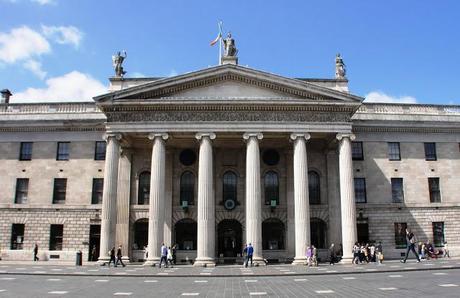
The Granite and Portland stone exterior of the General Post Office.
I was recently in the museum in the GPO which houses an exhibition entitled Letters, Lives and Liberty. It's only a small museum but it packs a punch. Not only does it give a background to postal and communication services in Ireland it also describes the role played by the GPO in the Easter Rising. It also brings to light the story of the postal staff who worked in the GPO during the rising. This was something I personally had never considered before.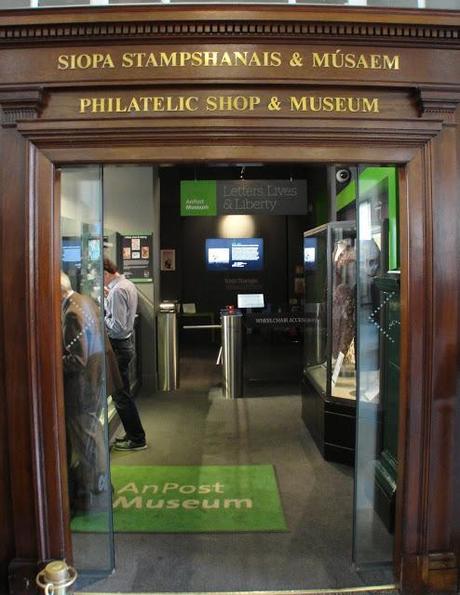
The entrance to the GPO museum
When Padraig Pearse read the Proclamation and then took control of the GPO most of the staff inside were forced to leave. A small few barricaded themselves into a room upstairs though. They managed to send a few brief messages before the rebels fired shots into the room and forced their surrender. Accounts of their ordeal can be read in GPO Staff in 1916 written by Stephen Ferguson who's curator of the museum in the GPO.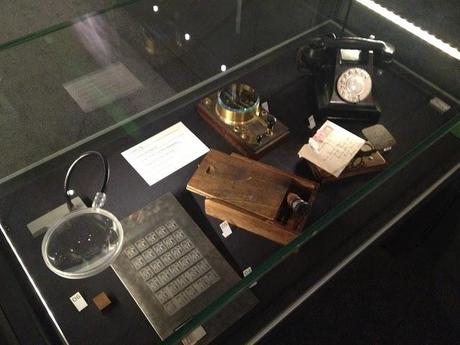
A history of communications is on display in the museum
The fighting lasted nearly a week. Pearse and the other leaders did not count on the British using an artillery ship in the middle of the city. The shelling left much of Sackville Street in ruins, including the GPO and prompted the surrender of the rebels. In less than a week 450 civilians were dead, 2500 were wounded and nearly two million pounds worth of damage had been done. Some evidence of this can still be seen today, when walking past the GPO look for the holes left by the shelling in the columns of the building.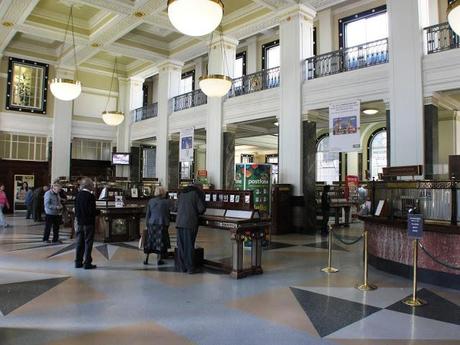
The beautifully restored interior of the GPO
The GPO lay as a heap of rubble until the Irish Free State began renovations in 1926. The building was reopened to the public in 1929 by the then Taoiseach WT Cosgrove and one of the volunteers who was posted there during the rising. Around this time Sackville Street was also renamed O'Connell Street.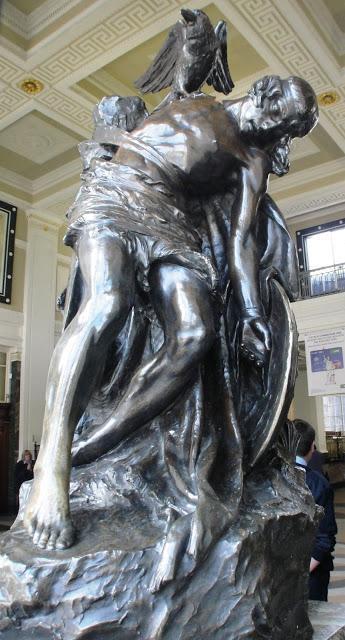
Cú Chulainn in bronze by Oliver Sheppard.
Inside the GPO you'll find a busy working post office. Along with the museum there's one other monument of note. The statue of a dead Cú Chulainn with a raven on his shoulder stands in the middle window of the GPO. Legend tells that the mortally wounded Cú Chulainn tied himself to a pillar so that he could look his enemies in the eye. So scared were they of him that they dared not approach him until a raven landed on his shoulder signifying that he was dead. The statue by Oliver Sheppard, which was cast in 1911, was placed in the GPO to commemorate the 1916 Easter Rising.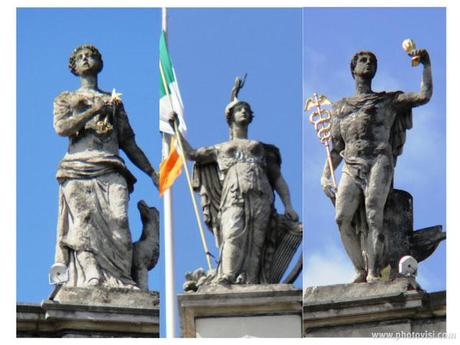
The three statues looking down on us from the roof of the GPO are (L-R) Fidelity, Hibernia and Mercury. They were sculpted by John Smyth.
I'd really like to encourage Dubliners and visitors alike to take a turn around the GPO, the museum only costs €2.00 and in 30 minutes you can, like me, learn more about one of the cities most prominent and important buildings.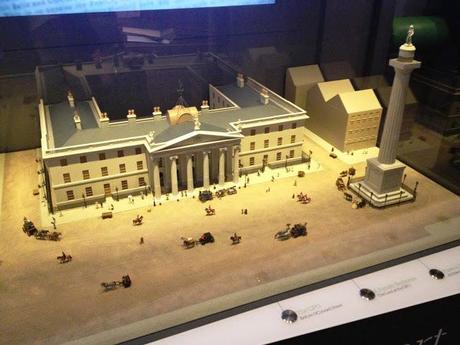
What the GPO would have looked like before 1916. Note the railings around the building and, of course, Nelson's Pillar.
General Post OfficeO'Connell Street
Dublin 1
01 405 7000
Website
This is the third post in my On the 1916 Trail. The other two can be read here and here.

